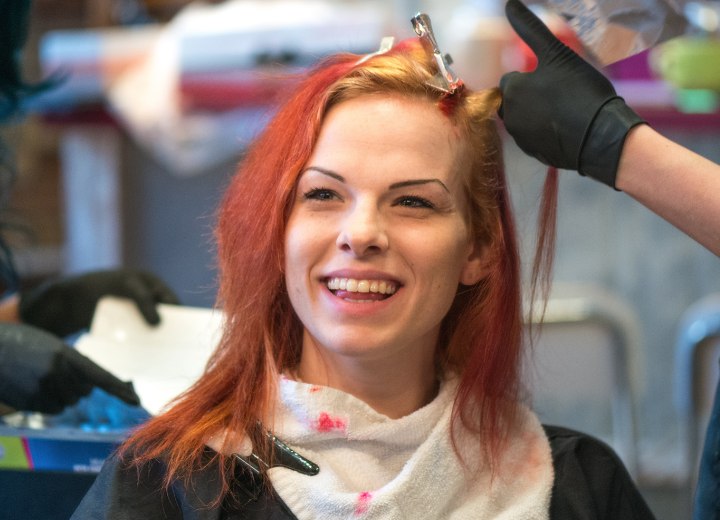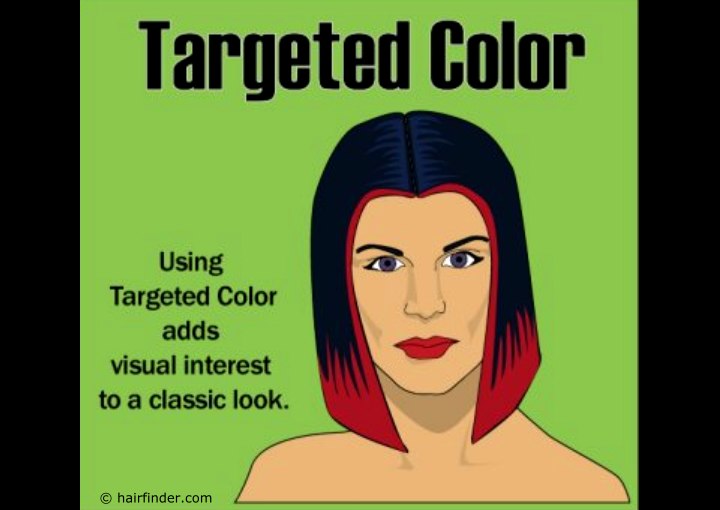Wild Hairstyles (2)

Making a Gradual Transition vs. A Dramatic Make-Over
Are you sure of the look you want? If you are, then you probably won't hesitate to hop into the stylist's chair and tell them to make it happen. But some people think they'd like a wild look, but aren't sure if it's right for them. A good stylist won't pressure you into any dramatic changes unless you expressly tell them it's what you want. It's the fastest way to lose a client if they say "You'll absolutely love it" and they happen to be wrong.
Ask your stylist about making a gradual transition into the wild look. Perhaps you can get a cut that can be styled to look funky or more sedate, so that if you decide you don't like the effect of chunky spikes, you have an option to fall back on.
If you're not 100% certain that going wild will work for you, take things a step at a time. Try either cut or color first then add another step until you get to the goal you've set for yourself. It's more expensive and time-consuming this way, but the result is that you'll be sure of what you're getting before you commit to it, and if it begins to become something you don't care for, you can avoid having to deal with reversing a dramatic look (or heavens forbid, wait for it to grow out).
Ideas to Add a Little "Wild" to a Mild Style
There are a lot of ways to liven up your hairstyle: color, texturing, highlights, lowlights, etc. Adding that touch of "wild" to your style is just a matter of putting a little more pizzazz into those processes. Here are some ideas for different hair types to add that element of "wildness":
Straight Hair:
Many women with straight hairstyles think that a wild look has to mean cutting their hair into a geometric or asymmetrical style. But in actuality, there are several techniques to give an otherwise classic look a wild twist.
Targeted Color: Try adding color along the perimeter of your hairstyle. This is an especially good look for blunt-cut styles. It's a simple process and can be easily done freehand with a brush applicator. It adds emphasis to the cutting line of the hairstyle and emphasizes the movement of the hair.

Layer of Color: In this method, the outer layer of the hair is colored either as a whole, creating a curtain of colored hair over the natural hair color (or base color). The full-coverage method allows for the natural color of the hair to "peek through" as the hair moves adding interest to the style.
Chunky Colors: The chunky panel method can be applied to either frame the face, or be spaced evenly around the head for a less bold effect than that achieved with the Layer of Color method.
Curly Hair:
Curly hair can be a lot of fun to make wild. By adding a little color and texturing, curly hair can be a lot of fun.
Notched Curls: With naturally curly hair that has tight spirals, one method can be to "thin" the hair with widely notched shears, leaving some of the curls long to stick out from the main body of hair. This gives an exotic, haloed effect to the style.
Targeted Highlights: By adding moderately bold highlights that are styled to be formed into their own curls, you create the effect of "colored accent curls" in the hair. By adding two bold, yet complimentary colors to the style you can spice up an otherwise less than exciting mop of curls.
Tipping: Tipping works especially well on shorter curly styles with larger curls. By adding a bold accent color to the ends of the curls, you give the hair a somewhat feathered look. The look can be soft and diffused or styled to add definition to the separate curls and therefore to the tips of color.
Reversed Lights: In this method, color is applied to the hair from the scalp to varying point on the length of the hair. It's generally better when the color applied is darker. On full, curly hair the effect is one of drawing attention to the outer ends of the hair and looks especially good when the curls are styled with definition.
Continue reading ...